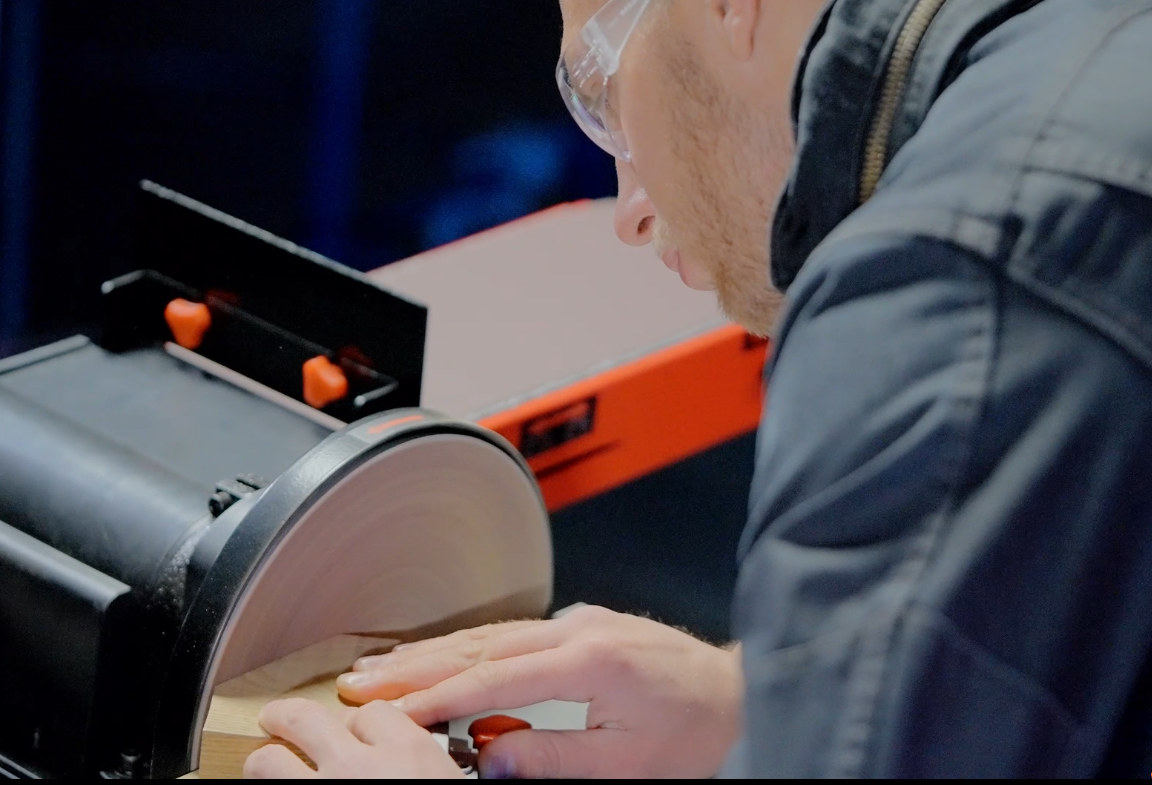A benchtop belt sander is usually fixed to a bench for fine shaping and finishing. The belt can run horizontally, and it can also be tilted at any angle up to 90 degrees on many models. In addition to sanding flat surfaces, they are often very useful for shaping.
Many models also incorporate a disc sander on the side of the machine. This comes with a sanding table that can often be tilted up to 45 degrees and a miter guide. Combining these two features allows for compound angles to be set, thus increasing the range of belt sander uses.
Most benchtop belt sanders also have a sanding disc and table. These add versatility, and they allow for accurate sanding of small pieces.
Belt Sander Safety Tips
Using a belt sander safely is largely a question of common sense. However, these tips will help avoid unnecessary injury.
Never wear loose clothing when belt sanding, as it can get caught in the belt or rollers. Neckties, necklaces, and bracelets should be tucked inside clothing or removed.
The Occupational Health and Safety Administration (OHSA) warns that wood dust can cause respiratory problems, and allergic reactions. Always wear a dust mask and safety goggles.
All belt sanders have dust ports. Empty the dust bag regularly or attach some form of dust extraction for benchtop models.
Keep hands and fingers as far from the sanding belt as possible while working. Skin abrasions caused by sanders are very painful. Wear lightweight leather.
Always turn off the power or remove the battery from a cordless belt sander before changing the belt.
How to Use a Belt Sander

Tags: Belt disc sander
